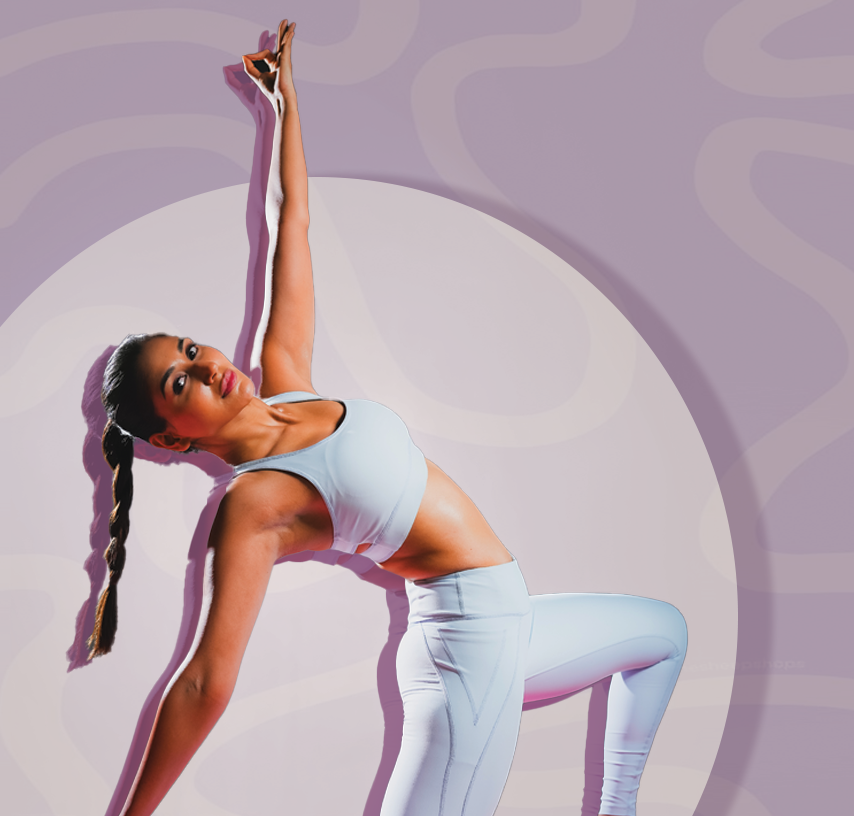Lotus stance is a crucial basic stance in yoga practice, just as significant as the lotus flower is in Hindu symbolism. The physical and mental padmasana benefits are many, including the ability to extend the legs and ankles and promote lumbar spine circulation. In addition to being a stabilizing pose, Padmasana is also deeply expansive, according to Rod Stryker, the founder of ParaYoga and a yoga instructor since the late 1980s. Although grounding takes place physically, it energetically focuses our attention on the spine and higher centers
What is Padmasana (lotus pose)
The yoga asana Padmasana in english is often known as the Lotus pose, serves to deepen meditation by soothing the mind and resolving a variety of physical problems along with other padmasana benefits. ‘Padma’ means lotus in Sanskrit and ‘asana’ translates to a posture, pose or position. It is pronounced as ‘Pa-dah-maa-sun-aa’ As with a lotus, a frequent practice of this position promotes total flowering in the practitioner, thus the name Padmasana. The Lotus pose is often referred to as the Vajra position in Chinese and Tibetan Buddhism.
Types of padmasana
Some variations of padmasana include:
-
Half Lotus Pose or Ardha Padmasana
-
Bound Lotus Pose or Baddha Padmasana
-
Psychic Union Pose or Yogamudrasana
If you follow any of these types, you can easily reap the many padmasana benefits and healing. With the right padmasana procedure andpadmasana steps, you can master this in no time.
Step by Step Process of Padmasana
Following the right procedure is very important for padmasana benefits. Steps for performing Padmasana are shown below:
-
Keep your spine straight when you take a seat on the ground or a mat with your legs out in front of you.
-
Place your left knee over your right thigh by bending it.
-
Make sure your left foot's sole is facing upwards and that the heel is close to your abdomen.
-
Repeat the last motion with your right leg right now.
Benefits of Padmasana
You will find a lot of advantages and padmasana information in english online. You need to keep in mind padmasan precautions too while doing it. Several padmasana benefits have been noted over the years, some of which are listed below:
-
It boosts digestion
This is due to the fact that Padmasana yoga gently massages the abdominal region of the body, improving digestion. Additionally, the abdomen receives a new blood flow direction, which improves the digestive system. When the lotus pose is practiced frequently, digestive issues like constipation are eliminated.
-
It helps reduce tension and helps the mind relax
This is because the tight muscular tissues can be reduced in this position. This yoga pose's original breathing pattern helps to calm the mind and lessen any unhappy feelings and thoughts.
-
It helps with birthing
This yoga position promotes stability and strength in the pelvic muscles as well as helping to strengthen the pelvic area. As a result, it is simpler to cope with the discomfort and contractions experienced during childbirth. This type of yoga should be practiced by expectant mothers without excessive stretching or strain. They are able to widen their hips and deliver almost painlessly by doing this.
-
It reduces cramps and agony during menstruation
The gentle massage that Padmasana yoga provides to the abdomen helps to relax that area and, to a certain extent, lessens cramps brought on by menstruation. This yoga posture reduces the likelihood of experiencing cramps during menstruation by enhancing the pelvic area's strength and suppleness.
-
It enhances Posture
Since we must maintain a straight back while performing padmasana, it helps to strengthen our spine and improve our posture.
-
It strengthens the shoulders and neck
The entire weight or your body will be supported by your shoulders during urdhva padmasana. This will strengthen the muscles of your neck and shoulders.
Apart from all this, you will be amused to know that there are many more advantages of this asana. Padmasana aids in easing tension in the muscles and controls blood pressure so that it is under control. It also helps you become more conscious. Padmasana helps control anxiety and fear.
Who should not do Padmasana?
In the following situations, it is not appropriate to practise Lotus Pose (Padmasana):
-
Surgery and Injury
People who have ongoing knee problems, ankle injuries, sacral instability, or lower back problems should avoid this posture. It could result in pain, cramping, and a sprain. Yoga practitioners with sciatica and sacral disorders shouldn't perform the Lotus posture since it could aggravate their lower back pain from a pinched spinal nerve.
-
Lack of One’s Body-Breath Connection
In order to properly perform any posture, people must connect their bodies and breath. If they don't, they will undermine the goal of their practice. People must therefore pay attention to their breathing when performing Lotus Pose and make sure their body is solid but comfortable in the position. Beginner people who do not have any health issues can lean on the wall behind them for support, and they can also utilize cushions or blankets as props to provide more support for their pelvic area.
-
Bodily Strength and Weakness
People who may have weak knees or slight joint pain can use props (a pillow or blanket for comfort) to help them feel more at ease. People who experience minimal back pain can also sit slightly leaned against the wall. The ability to hold this position for a few breaths and gradually extend the time is very crucial. The Half Lotus pose would be the best for practice if some pupils find it difficult to interlock their legs. Before performing The Lotus Pose, people with tight hip muscles can perform some hip-opening exercises.
-
Others
Elderly people and beginners should avoid the posture if their knees, ankles, or lower back are weak. It might lessen the blood flow to their legs, which would be quite painful. Although the Lotus posture is excellent for opening the hips in pregnancy, if a woman has back pain or swollen ankles she should avoid it. Students with knee arthritis must also stay away from the activity. Compression of the abdomen and pelvis may result from it.
Encourage pupils to perform the Ardha Padmasana (Half Lotus Pose) or use props for comfort if the physical concerns are not severe.
How long should we hold Padmasana?
Stay in the Padmasana position as long as it is comfortable for you. If there are any sign of discomfort or agony, release immediately but gradually. Keep the position for 20 minutes or longer if it is comfortable for you in order to meditate.
If you like Padmasana, you can also try
Pay close attention to your knees while you practice. You should back off and adopt a milder approach if you feel any pain or pinching.
You might wish to take a vinyasa or put your legs into Navasana (Boat Pose) for a few breaths in between poses. Virasana (Hero Pose), which may be performed either with your hips on the ground or elevated on a block, depending on your flexibility, is another posture that is beneficial for the knees in between poses. Here are some alternatives of Padmasana:
-
Ardha Baddha Padma Paschimottanasana or the Half-Bound Lotus Forward Fold
-
Marichyasana B Pose
-
Marichyasana D Pose
-
Baddha Padmasana or the Bound Lotus Pose
-
Padmasana Lotus Pose with Jnana Mudra
The lotus, which remains rooted in the mud and eventually starts to bloom into a lovely flower, is indicative of this posture, which contains a lot of grounding and vitality. Similar like when you first begin practicing yoga, you are rooted in the dirt and have a lot of problems, but as you advance, you have the potential to blossom like a lotus flower.
The term Padmasana comes from the fact that regular practice of this pose promotes the entire blossoming of the practitioner, much like a lotus. The Vajra stance is also known as the Lotus pose in Tibetan and Chinese Buddhism.

































